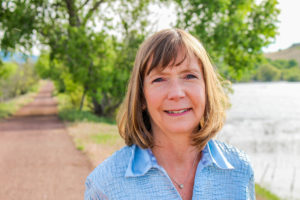Many people have studied the habits of pockets of people with unusually long life spans. Some of the common factors leading to longevity among these populations are obvious like not smoking, little to no exposure to toxins, little to no exposure to processed foods, and constant movement as required by a lack of modern conveniences.
Dan Buettner published his findings in 2010 in his book “Blue Zones”. He identified five blue zones that contained some of the longest living people on earth include: Okinawa, Japan; Sardinia, Italy; Nicoya, Costa Rica; Icaria, Greece and the Seventh-day Adventists in Loma Linda, California. Here are some of his findings.
Eat Less in a Shorter Window of Time
In the blue zone locations of Nicoya, Sardinia and Okinawa, people tend to eat relatively small portions of whole foods. Their diets are low-to-moderate calorie diets. They also tend to avoid lots of fat and processed and packaged foods, especially those containing sugar. The Okinawans practice the traditional cultural rule of “Hara hachi bu,” which means eating until they are only about 80 percent full. Interestingly, there are studies that show that eating a calorie restricted diet does result in better weight management and healthier aging.
These blue zones also typically consume most meals in an 8-12 hour window. This is on long side of the current trends that recommend intermittent fasting. Most intermittent fasting regimens recommend consuming all of your calories in an 6-8 hour window. There are many variations on this trend of focusing on when you consume your calories. Another version is called alternate day fasting. This involves fasting for 24 hours between days of regular eating. Another version recommends eating 40% of your normal calories on a day you would be fasting. You might want to consider trying these different eating schedules to see if one works well for you.
Eat Legumes
A legume is a dry fruit contained within a shed or a pod of a plant. The most well-known legumes are beans, peas, peanuts, and alfalfa, which is in the pea family. In contrast to the current popular advice to avoid beans and legumes, the blue zones seem to contain a lot of beans. In Nicoya, it’s black beans. In the Mediterrean, it’s lentils, garbanzo, and white beans In Okinawa, it’s soybeans.
Legumes are high in protein, high in vitamins and minerals, are filling, and are high in fiber. Just as importantly, they don’t spike your blood sugar because the carbohydrates are slowly broken down. If you determine that you are not sensitive to legumes, then go ahead and eat them daily. In the Blue Zones, they are often prepared by sprouting, fermenting or soaking. Preparing legumes like this provides an extra guarantee that you won’t react to them and you’ll get maximum benefit.
Have a Clear Life Purpose
Older Okinawans can readily articulate the reason they get up in the morning. Their purpose-imbued lives gives them clear roles of responsibility and feelings of being needed well into their 100s. Okinawans refer to purpose as “ikigai” (translated as reason for being). Nicoyans call it “plan de vida” (reason to live).
Also, in the blue zones, the elderly remain with the family until death. This gives people over 80 a huge advantage in those cultures versus today. They receive immediate care when injured or ill, but more significantly, they feel loved and a sense of belonging. This allows them to be less stressed and have a much more purposeful life.
Interestingly, in Dan Buettner’s most recent book, “Blue Zones of Happiness”, he found that having a sense of purpose also contributed to happiness.
Eat Wild Plants
Most people living in the blue zones eat red meat only a few times a month. (The Seventh-day Adventists in Loma Linda, California are vegetarians.) And most often meat is easten for special occasions like festivals and holidays. In many of the blue zones, people consume sheep or goat milk, eggs, and fish, two to three times per week. The animal products that are consumed tend to be raised locally, grass-fed, pasture-raised, or wild-caught. This means they are free from things like antibiotics and growth hormones.
The rest of their diet consists of plants. Eating plants provides lots of fiber including the natural anti-cancer agent insoluble fiber, antioxidants, oxidized cholesterol reducers, blood-clotting factors and essential minerals. And those people that have access to truly wild plants get an added benefit. This is because wild plants have a natural built-in defense mechanism and the microscopic amounts of the chemicals they produce to protect themselves are actually beneficial for us. They allow our bodies to develop our own antioxidant defenses.
Social Engagement
For most of the blue zones, social connectedness is ingrained in their culture. The people tend to be much more engaged with each other, show more empathy, be more helpful and openly express feelings.
For example, Okinawans have “moais,” which are groups of people who live together their entire lives, spending time talking, cooking and supporting each other. Sardinians often finish their days in a local bar, where they meet with friends for a glass of red wine. Seventh-day Adventists mingle with one another weekly or even daily as in religious practices and observation of the Sabbath.
Family is also very important for people living in the blue zones. For example, during that weekly day-long sabbath the Seventh-day Adventists observe, much time is spent focusing on family, God, socializing and nature. Social engagement is a sure way to feel connected to life, get needed support, contribute positively to others, and reduce stress. All of these things can contribute to living a longer healthier life.
Did this help you? If so, I’d greatly appreciate it if you commented and/or share it on social media.

Email: sharonledwards@hotmail.com
Facebook: https://www.facebook.com/sharonledwardsbiz/